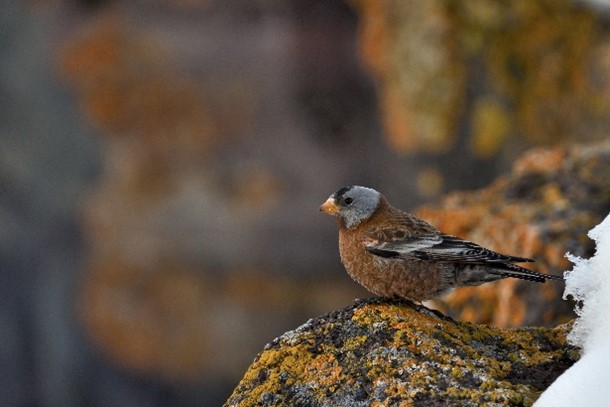Conservation
Planning
For some species of elevated concern or with extensive populations and key habitats on the INL Site, DOE-ID has developed conservation plans to protect species and the valuable ecosystems they inhabit.
These efforts include:
Candidate Conservation Agreement for Greater Sage-grouse
Populations of greater sage-grouse have declined in recent decades, and the species’ range-wide distribution across western North America has been reduced to nearly half of its historical numbers. Healthy stands of sagebrush are necessary for sage-grouse to survive throughout the year; however, young sage-grouse also require a diverse understory of native forbs and grasses during the summer months.


Male greater sage-grouse displaying breeding behavior and the high quality sagebrush habitat preferred by this species.
When the greater sage-grouse was petitioned for listing under the Endangered Species Act, DOE’s Idaho Operations Office (DOE-ID) recognized the need to reduce the potential for impacts to existing and future mission activities. In 2014, DOE-ID entered into the Candidate Conservation Agreement with the U.S. Fish and Wildlife Service to identify threats to the species and its habitat and develop conservation measures and objectives to avoid or minimize threats to sage-grouse.
INL’s Natural Resources Group monitors sage-grouse populations, sagebrush habitats and activities that are considered threats to sage-grouse survival on the INL Site.
Bat Protection Plan
Over the past several decades, newly identified threats to bat populations (e.g., white-nose syndrome and large-scale commercial wind energy development) have caused widespread mortality events in bats and resulted in precipitous declines of numerous common bat species. This has elevated conservation concern for bats across the United States, which may include petitions for additional listings under the Endangered Species Act. Bats represent over 30% of mammal species on the INL Site.
In 2011, DOE-ID and the Naval Reactors Laboratory Field Office/Idaho Branch Office decided to increase attention given to bat populations and initiate the development of a comprehensive Sitewide bat protection and monitoring program. The Bat Protection Plan provides a framework for reducing mission impacts associated with protected bat species, monitoring the status of bat populations, providing current data for environmental analyses, and engaging resource agency stakeholders, such as the U.S. Fish and Wildlife Service, Bureau of Land Management, and Idaho Fish and Game on bat issues.


Sagebrush Steppe Ecosystem Reserve
On July 19, 2004, DOE-ID signed a Finding of No Significant Impact for an Environmental Assessment and Management Plan that outlined a framework to collaboratively manage the Idaho National Laboratory Sagebrush Steppe Ecosystem Reserve. The reserve includes 29,945 hectares (74,000 acres) of high desert land in the north central portion of the INL Site.
DOE discourages development in the Sagebrush Steppe Ecosystem Reserve and follows the requirements of the management plan when mission-related actions are proposed to occur within the reserve. This includes seeking approval from the Sagebrush Steppe Ecosystem Reserve Management Committee.
Migratory Bird Conservation
Most activities at the INL Site are conducted within fenced industrial complexes to several hundred acres in size. Actions from day-to-day operations that can affect migratory birds include moving equipment like trailers and nuclear fuel casks, mowing vegetated areas for wildland fire protection, and utilities and infrastructure maintenance. Therefore, it is not unusual to encounter a variety of animals, including migratory birds, while conducting these activities.


A horned lark and a rosy finch, both migrants that utilize Idaho National Laboratory Site habitat seasonally.
As directed in Executive Order 13186 and outlined in a 2013 memorandum of understanding between DOE and the U.S. Fish and Wildlife Service, DOE-ID has developed a Migratory Bird Conservation Plan that provides a framework for protecting and conserving migratory birds and their habitat in accordance with the Migratory Bird Treaty Act of 1918 and the Bald and Golden Eagle Protection Act of 1940 while accomplishing INL’s mission.
